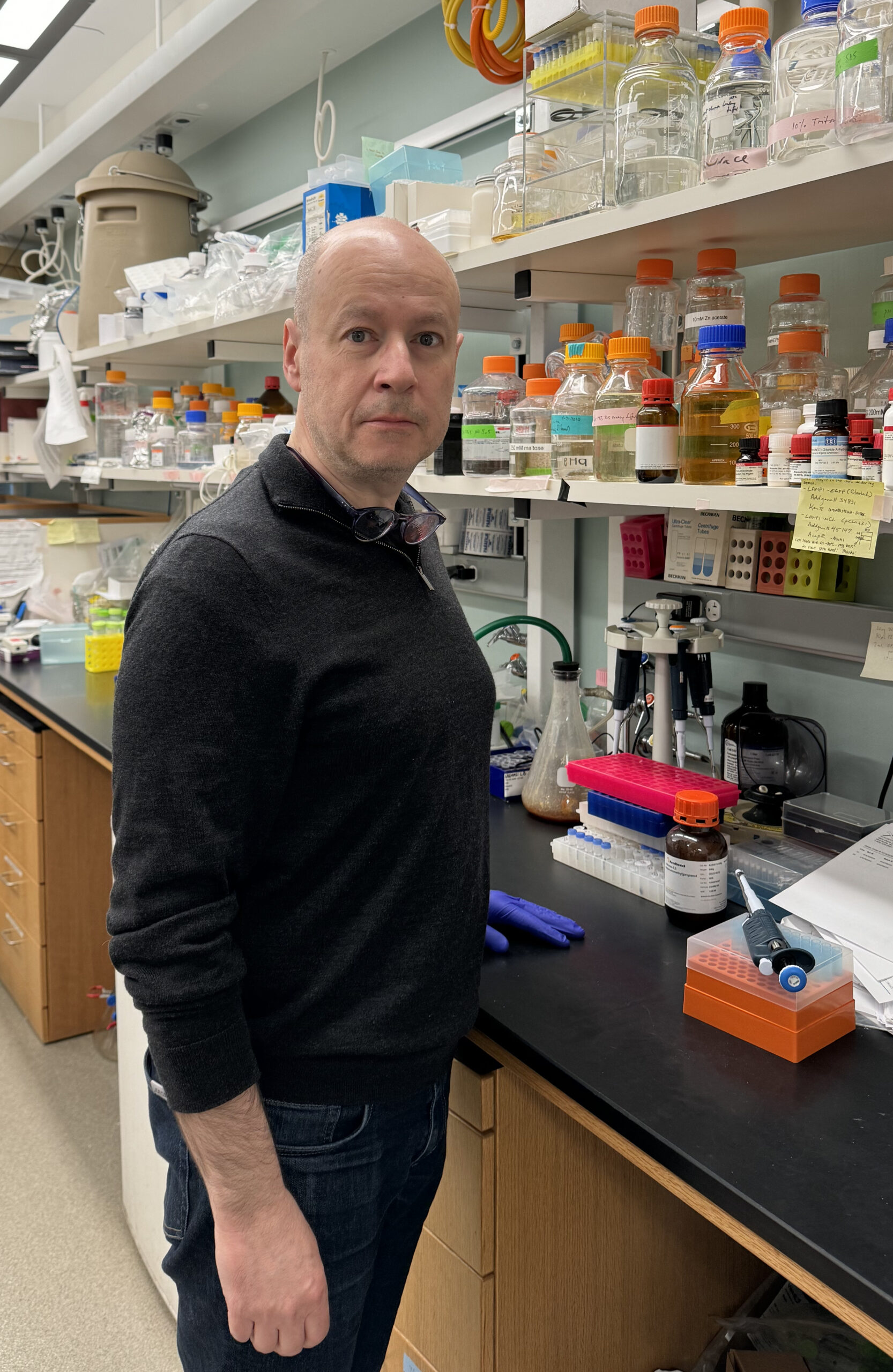In 1980, the famous geneticists Christiane Nüsslein-Volhard and Eric Wieschaus were mapping embryonic mutations in the model organism Drosophila melanogaster, known colloquially as the fruit fly. They found that when deleted, one gene caused the evenly spaced denticles of fly larvae to clump. Drosophila researchers are notorious for selecting descriptive — and sometimes witty — names for the genes they discover. Because the patterning looked like the surface of a spiny mammal, the investigators mischievously named the gene “Hedgehog.”
Adding to the fun, the discoverers of Hedgehog’s first mammalian homolog chose the name Sonic Hedgehog, after a small, fast and blue manga character in a famous Sega video game and comic book. The identification of two closely related genes, called paralogs, quickly followed, and researchers continued the joke with the names “Desert” and “Indian” Hedgehog — referencing hedgehog species native to the Arabian Desert and Western India.
Despite having “never played computer games in [his] life,” Adrian Salic, a professor of cell biology at Harvard Medical School and an IPI antibody validation collaborator, has spent years studying the function of Hedgehog proteins, specifically how they control communication between cells by the eponymous pathway.
Humor aside, abnormal Hedgehog pathway function has serious consequences: too little activity can perturb embryonic development, leading to birth defects, while too much activity can lead to cancer. Although the Hedgehog pathway plays a fundamental role in cell-to-cell signaling and human disease, its exact mechanisms remain unclear.
During an IPI seminar last fall, we spoke to Salic about his research motivations. He described the complex signaling mechanisms at work and the need for new antibodies to unravel the key interactions. This conversation has been edited for length and clarity.
Much of your work has focused on the Hedgehog pathway, where the transfer of ligands to receptors is driven by a series of lipid handoffs. What was your entry into studying the system?

When I started working on this, I’m not even sure I was thinking about it as a legitimate problem. Only by delving into it and understanding some of the biochemical issues involved did we conceptualize this idea of a dedicated pathway for transferring these ligands from one cell to another.
It was known that Hedgehog ligands were lipidated — just like it was known that Wnt ligands were lipidated — and it was even known that the lipid was very important for function. But exactly what kind of constraints lipidation imposes on these proteins and how the cell exploits this modification for regulation wasn’t known.
Tell me more about the function lipids serve.
When you put lipids on a protein, it is going to make it insoluble in aqueous environments, and it has to be handled in a way that prevents it from precipitating — just like cholesterol.
Cholesterol is extremely insoluble. In your blood, lipoproteins carry cholesterol, and the cells have a way of handling it to avoid precipitation because cholesterol, if it precipitates, forms crystals. That’s really bad for your cells, and it’s thought to be a major mechanism for atherosclerosis, which is the buildup of fats, cholesterol and other things on the artery walls.
A lipidated ligand, like Hedgehog or Wnt, faces the same issue. But I believe that the cell puts lipids on these proteins because, this way, they need a carrier to mobilize them. This intricate system is used to control the strength and range of the signal.
It’s not enough that you have a pathway, but you also want to use it in a graded way. You want to have graded outputs, because the cells can interpret the graded outputs differently, informing this type of cell with this output and another type of cell with higher output and so on.
How does this translate to disease?
Signaling is one of those things where you need to have just the right amount. If you have insufficient Hedgehog signaling, you get various birth defects, such as malformations of the limbs, the central nervous system, and bones.
You can have excessive Hedgehog signaling and that can give you cancer because it drives cell proliferation in certain tissues — most famously, skin cancer and medulloblastoma, the latter being the most frequent brain tumor in kids.
For example, Sonic Hedgehog specifies the identity of your fingers during limb development, and if its expression is messed up — too little, too much, or in the wrong part of the limb bud — then you can get various digit problems, such as polydactyly. The Hemingway cats are one example of this.

This sounds like a good story.
There’s a house in Key West that belonged to Hemingway. He once got a cat as a present, and this cat had six toes. The descendants of this cat still live in the house, and half of the descendants have this extra toe, this being a dominant mutation. And it turns out, that’s because during the embryonic development of these cats there is ectopic expression of Sonic Hedgehog, meaning expression in a part of the limb bud where it shouldn’t be expressed.
To understand what’s abnormal, you have to understand what’s normal.
You’ve also, more recently, begun work on the Wnt signaling pathway, a highly conserved pathway involved in carcinogenesis and embryonic development. How is the Wnt pathway similar to the Hedgehog?
There are some parallels. Wnts are similarly lipidated and I’ve known that they are very, very difficult to make in soluble and active form because of this lipidation. It’s the same biochemical problem faced by Hedgehog proteins, so it stood to reason that there have to be similar biochemical mechanisms that cells use to deal with it.
Are antibodies useful as reagents in your research?
Oh, absolutely.
How so?
One of the first things we did in the lab when we started working on this was make antibodies against various Hedgehog pathway components. Of course, we’re not as sophisticated as IPI — we made old-fashioned polyclonal antibodies against all the components we were interested in, and those ended up being very useful in allowing us to do the kind of biochemistry and mechanistic work that we did.
Now, of course, this is 15 years later, so we’ve come a long way with genomic technology and antibody technology, but we still make bulk polyclonals because it’s cheaper and faster for us — we’ll work with whatever reagents do the job.
Like everyone else, we’d like to use antibodies for stabilizing complexes for structural biology, for building intracellular sensors and for different perturbation experiments, where we block a certain interaction in a defined way with an antibody and look at the consequences of that. We’d also like to use nanobodies for proof-of-principle experiments. But having a way to make defined monoclonal antibodies in a high-throughput and cost-effective manner, that would be great.
Source: Adrian Salic, adrian_salic@hms.harvard.edu
Writer: Caitlin Faulds, caitlin.faulds@proteininnovation.org
Megan Talkington and Trisha Gura contributed to this story.
About IPI
The Institute for Protein Innovation is pioneering a new approach to scientific discovery and collaboration. As a nonprofit research institute, we provide the biomedical research community with synthetic antibodies and deep protein expertise, empowering scientists to explore fundamental biological processes and pinpoint new targets for therapeutic development. Our mission is to advance protein science to accelerate research and improve human health. For more information, visit proteininnovation.org or follow us on social media @ipiproteins.


